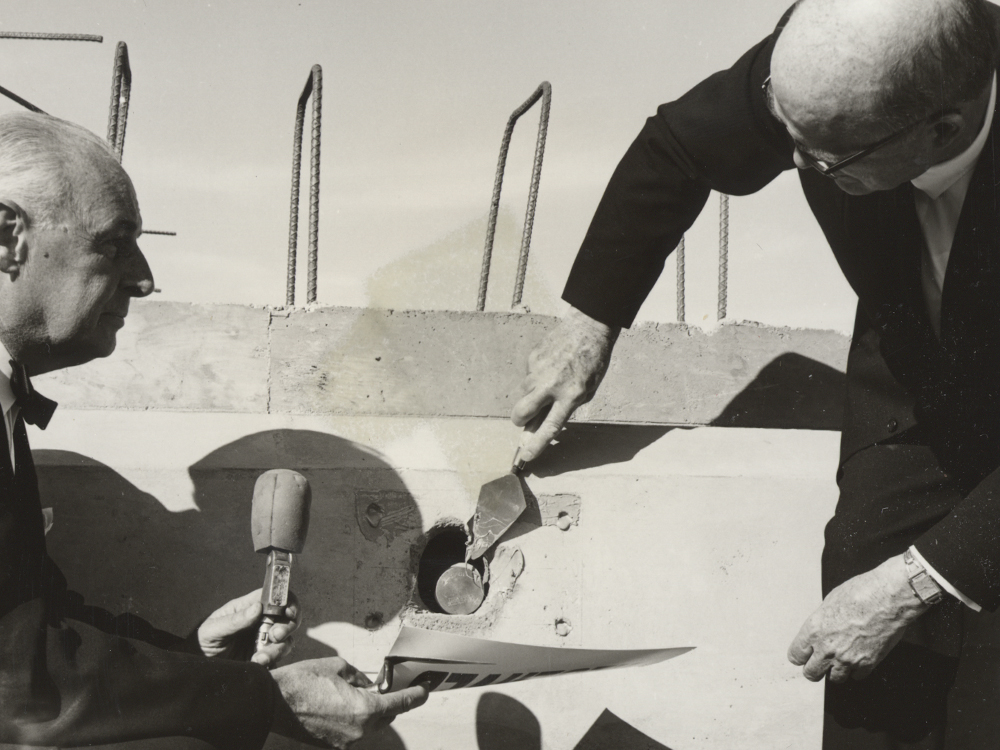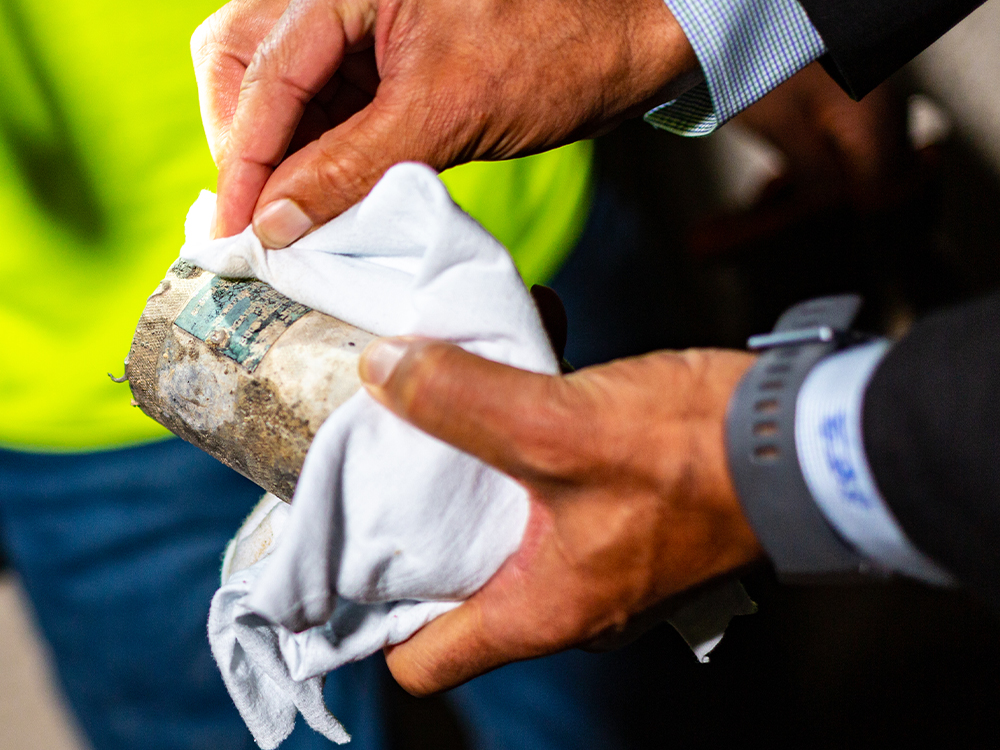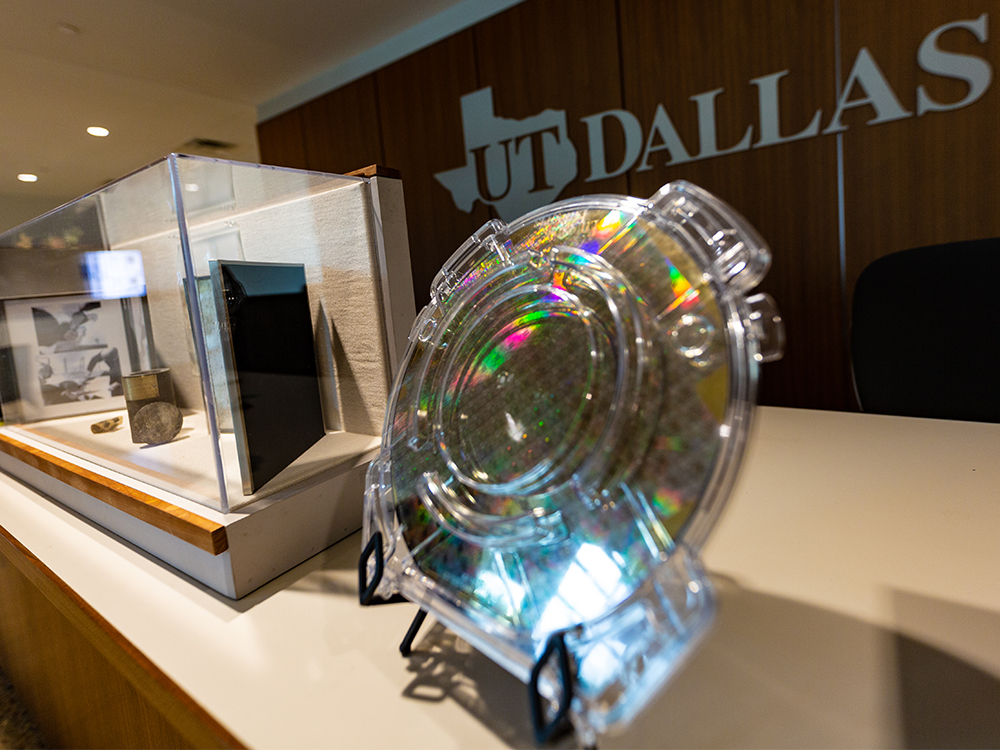The Search for the 1963 Time Capsule
11.11.2019
 Erik Jonsson (right) and Lloyd Berkner, president of the GRCSW, seal the time capsule into the foundation of the future Founders Building.
Erik Jonsson (right) and Lloyd Berkner, president of the GRCSW, seal the time capsule into the foundation of the future Founders Building.
In 1963 UT Dallas co-founder Erik Jonsson helped seal a time capsule into the foundation of the future Founders Building. The lead cylinder contained a small cesium clock and a microfilm of the charter for the Graduate Research Center of the Southwest (GRCSW) — the precursor institution of UTD.
Yet as construction and expansion changed the campus landscape in the years afterward, the exact location of the time capsule was forgotten.
That was until September, when the vessel was pulled from the foundation of the Founders Building after more than 50 years.
 The time capsule is gently cleaned shortly after being pulled from the foundation of the Founders Building.
The time capsule is gently cleaned shortly after being pulled from the foundation of the Founders Building.
Its discovery can largely — if not wholly — be credited to the late Dr. James Carter, associate professor emeritus who arrived on campus in the early 1960s.
Although he officially retired in 2008, he was a regular fixture on campus for the next 11 years. Carter always claimed he knew where the time capsule was located — he just needed to prove it.
Prove it he did. Before his unexpected death in September 2019 and with the help of personnel in facilities management, Carter tracked down the location of the small piece of UTD’s history.
UT Dallas President Richard C. Benson presented the time capsule and its contents to the University community during the annual Founders Day celebration on Oct. 29.
 From left: The microfilm of the GRCSW charter, the cesium clock and the lead cylinder.
From left: The microfilm of the GRCSW charter, the cesium clock and the lead cylinder.
“The time capsule — displayed here — had become a personal quest for the late Dr. James Carter,” he said. “We didn’t know for sure if the time capsule had survived. But because of Dr. Carter’s dedication to the search, we were able to recover it.”
At the Founders Day event, Texas Instruments — whose founders also established the GRCSW and UT Dallas — provided a 300-millimeter wafer to be the first item for a new time capsule. Additional items will be collected throughout the school year.
–Paul Bottoni
 The time capsule (far left) and the wafer donated by Texas Instruments
The time capsule (far left) and the wafer donated by Texas Instruments
Here are a few remarks that Jonsson made on the day the time capsule was buried. They still resonate today.
Tags: UTD History“Today’s dedication is something like the commissioning of a vessel for exploration — here, in this first laboratory building of the [Graduate Research Center of the Southwest], there will be many explorations. These will be scientific in nature — beyond the present boundaries of human knowledge. The courses will — many times — be uncharted.
“What will be sought? The treasure truth — the richness of ideas — the innovation upon which our futures, as a region — and a nation — can be built to the heights.
“A fine structure will rise from this foundation in the next few months. This is good. But building stone and mortar are not an expression of purpose. The shape and form of this building must be enlivened by the presence of the scholars and their associates. The lasting importance of this place will be the effects of its ideas on how we live and what we do.
“So it is to those who seek the truth that we make dedication of this moment.”